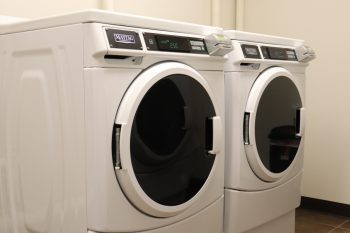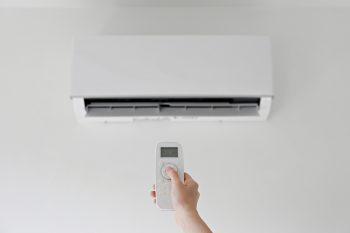
If you’ve recently purchased a ceiling fan, you might feel a little excited to finally have it installed. Of course, you could wait for your trusted electrician to install your fan. But if you can’t wait, you can do it yourself.
To be clear — installing a ceiling fan isn’t necessarily the simplest of tasks. But with proper instructions and guidelines, you should be able to get the job done like a pro. Wondering how to wire a ceiling fan?
Here’s a complete guide.
- It may be possible to wire a ceiling fan without the help of an electrician.
- Make sure to familiarize yourself with the different wires in the system.
- Use the proper steps based on the kind of switch or pull chain system your ceiling fan uses.
- Follow any necessary precautions to make sure you’re doing the job safely.
- Consider local codes that might call for permits depending on where you live.
If you don’t have much experience with electronics, it might be best to leave the task to someone with more knowledge. But if you’ve handled electronics before, then you might be able to pull off a ceiling fan installation with just a few pointers.
How To Wire a Ceiling Fan
Wiring a ceiling fan requires specific safety measures to prevent potential accidents and injuries. Remember that electricity can cause serious physical harm, so it pays to consider your safety before anything else.
- Turn off the main power and secure the circuit breaker to prevent others in your home from turning it on as you work.
- Use a voltmeter to ensure that there isn’t any electricity running through your wires before you begin working.
- Read as many resources as possible and consult a professional before you start.
It’s also important to consider the rules in your state. Local codes may prevent you from performing indoor wiring projects without the help of a professional.
1. Familiarizing With Wires

It is of utmost importance to know which wire you’re working with. Ceiling fans typically have several wires that correspond and provide power to their different features. Manufacturers will follow a standard regarding the colors of their wires so that people can install their fans without too much guesswork.
Some of the wires you’ll see include:
- Black – Fan.
- Blue – If your fan has a light, the blue wire feeds it power.
- White – Neutral.
- Green – Ground.
In the same way, you should also know the wires in your ceiling that you’ll connect your fan too.
These include the following:
- Black – Hotwire feeds power from the switch.
- White – Neutral.
- Copper or green – Ground.
- Blue and black – Corresponds to two separate switches on your wall.
- Red – For single switch assemblies.
2. Without Switches
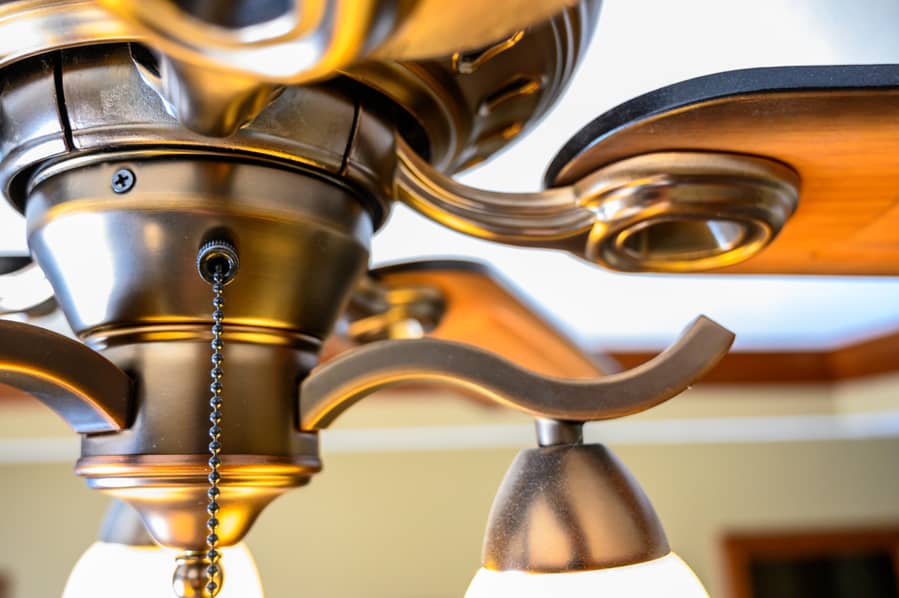
Check your ceiling fan model — does it have a set of pull chains to turn both the fan and light on and off? These models require the simplest wiring steps.
- First, connect the white wires from your ceiling fan and your house.
- Next, connect both ground wires. These are identified by the color green.
- Connect the black wires when both the neutral and ground wires have been secured.
- Connect the blue wire to the black wire to supply the lights. If our fan doesn’t have lights, proceed anyway. This gives a provision for lights in the future.
3. One Switch, One Pull Chain

The fans with a pull chain and light switch power supply will have an extra red wire.
Follow these steps to wire this type of ceiling fan properly:
- Connect the ground wires first, which may be either green or copper colored.
- Bring together the white wires and use a wire nut to secure them.
- Take the red wire from the ceiling and connect it to the black wire for the light.
- Take the black wire from the ceiling and connect it to the black wire for the fan.
4. One Switch
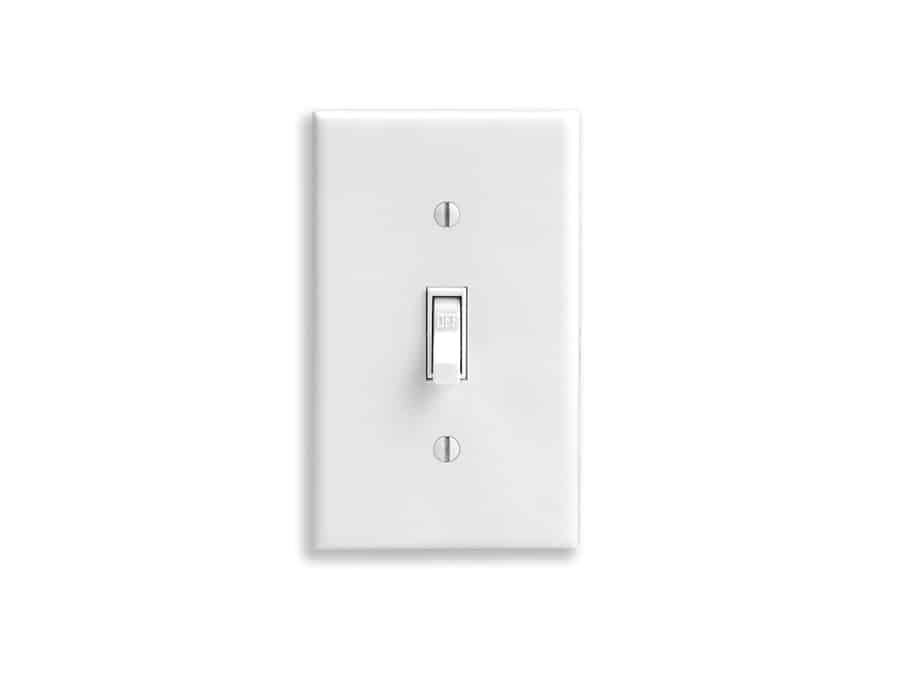
Some models turn on both the fan and its lights with one switch. Like the previous model, this type of ceiling fan will require an extra red wire.
- Start with the ground wires.
- Next, secure the white neutral wires.
- Connect both of the black wires.
- Take the blue wire for the light and the black wire for the fan and connect both to the black wire coming out of the ceiling.
5. Two Switches
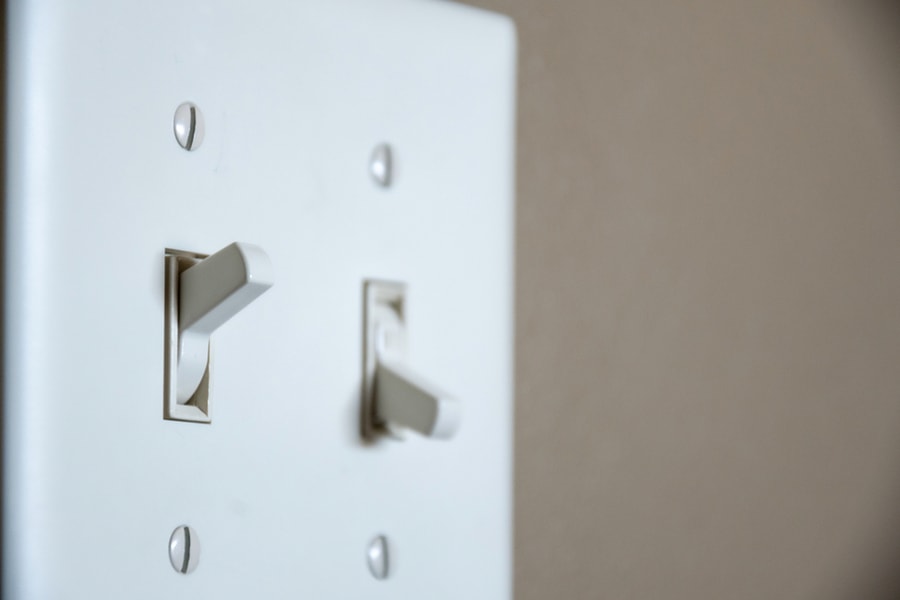
It’s more common these days to find ceiling fans with two separate wall switches — one to control the fan and another to control the light. Keep in mind, though, that wiring a ceiling fan with separate switches may require slightly more time and skill.
- Secure the black fan wire to the black wire in the ceiling.
- Connect the blue and red wires.
- Secure the neutral wire with the neutral wire and the ground wire with the ground wire.
Head over to the switch box and perform the following steps:
- Take the hot wire and fork it into a Y. Connect both ends to a terminal on each switch.
- Connect the black wire to the screw in the first switch.
- Do the same with the red wire, but this time in the second switch.
- Connect the white neutral wires.
Conclusion
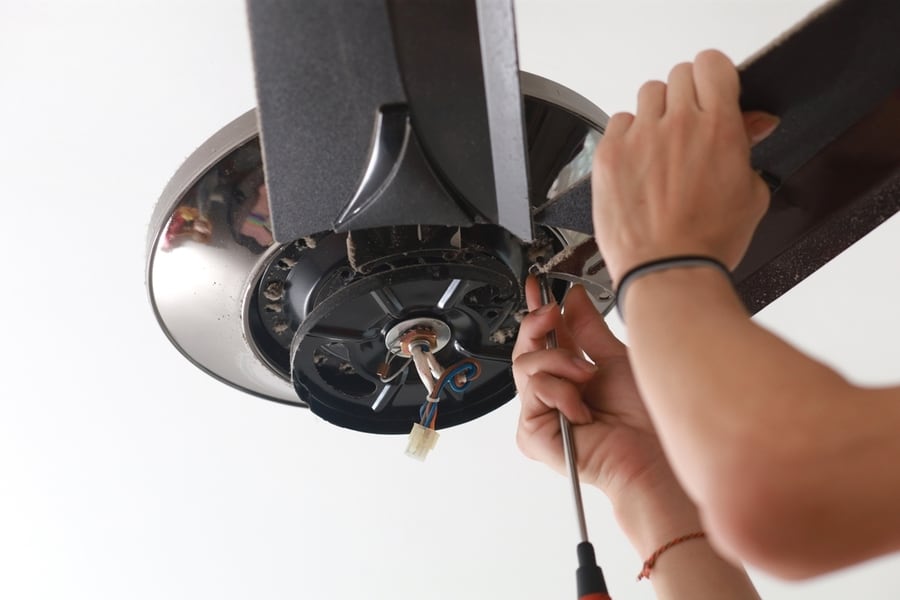
Think a ceiling fan installation is something you can handle? While these steps try to make it look simple, the process itself might be a little more complicated than it seems.
It’s always best to call a professional for these types of jobs. But if you can’t wait, then you can give these steps a try.
Frequently Asked Questions
Is It Safe To Install a Ceiling Fan on My Own?
It can be as long as you follow the proper steps and precautions. You must also use the proper tools for the process to avoid any damage to your fan or your wiring and injury to yourself. If you’re doubting yourself to any extent, see to it that you hire a professional instead.
What Happens When You Wire a Ceiling Fan Wrong?
Connecting the wrong wires could lead to problematic consequences, including:
- Short-circuiting.
- Tripped circuit breaker switches.
- Ceiling fan lights bursting.
- Electrical fires.
- Fan blades are turning the wrong way.
To avoid these problems, make sure you follow the proper steps. Again, if you’re not confident in your skill, hiring a professional is best.

